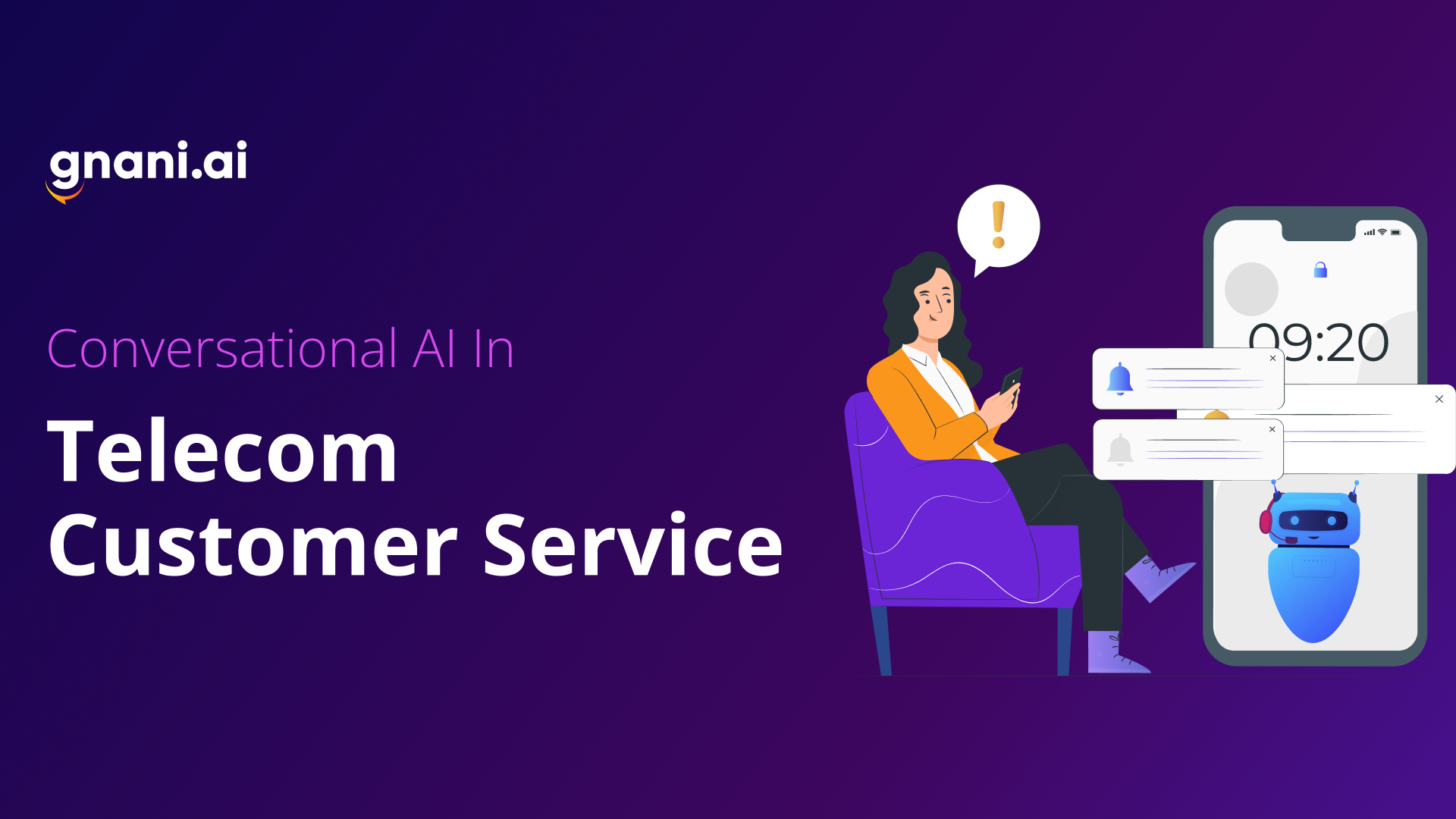Staying connected is a non-negotiable need of people today, and the Telecom industry is at the forefront of delivering it. This industry is going through a massive change as new technologies such as 5G, IoT, and cloud computing emerge. In a market where customers are particularly demanding, telecom companies must deliver smooth and above par customer service to stay competitive in 2022. Easier said than done.
“All of our staff are busy at this time. Please hold for the next available person.” – Common and cringe-worthy, right?
Retaining customers in telecom is way more complex and laborious than in most other industries. Consider this – an average human agent attends and resolves 31.5 calls each day, where each conversation can continue for as long as 12 minutes. A lot of these calls are not possible for agents to handle alone. The average wait time for a customer to get through to an agent is about 4 minutes. This results in poor customer satisfaction (CSAT) score, not to mention the constant worry of customers switching to competition for the slightest hiccup in their experience.
Why is it so difficult for telecom companies to provide a positive customer experience? Because everyone has a phone or is about to get one. Music as it might be for Telecom companies ears’, it is not easy to deliver consistent, above-average customer satisfaction in such a highly fragmented market with a record level of impatience shown by customers. Telecom customer service queries make up over 78% of the top five customer service queries and 63% of the top 10. With a negligible cost to switch, there is nothing except customer satisfaction that can keep customers.
The good news is, the SOLUTION is right here. The name is conversational AI.
Hello, this is your personal assistant speaking. How may I assist you today?
Beyond strategy, there are three major areas that Telecom enterprises must keep in mind. First, they need to be sure of where and how to use conversational AI to get the highest returns. Next, they need to set practical and realistic expectations for the ROI and finally select the best way to deploy conversational AI in their scheme of things.
According to Accenture, 56% of companies say that Conversational AI is driving disruption in their industry, with a further 43% reporting that their competitors are already implementing chat technology. This is because, we think, it can respond to the impatient customer, the customer who is upset, a customer who has almost decided to switch to another company and others. In addition, the agility, memory and efficiency with which a conversational AI handles large amounts of calls can improve retention significantly. And this has been proven especially after the onset of the COVID-19 crisis, where the global market for Artificial Intelligence (AI) in Call Centers is estimated at US$1.1 Billion in the year 2020, is projected to reach a revised size of US$3.5 Billion by 2026, growing at a CAGR of 21.5% over the analysis period.
In the end, it is always about getting to what matters which is, in this case, winning customers’ loyalty in a highly competitive market. Conversational AI has been around for a while now, and both telecom enterprises and users are discovering the advantages of both using and being served by it. These benefits include but are not limited to fast, improved, 24/7 customer service, automation of repetitive tasks, reduced costs, increased revenues, scalable technology, hyper-personalization, human-like interaction, and improved customer satisfaction. Its ability to capture, process and analyze humongous amounts of data safely and securely is unmatched. Some new areas where its benefits are being seen include optimizing network maintenance and predictive maintenance, detecting network issues, and protecting networks from possible fraudulent activities.
Now is the time
It’s clear that the momentum in adopting conversational AI in Telecom is going to keep rising. And why not? 24×7 availability, multi-lingual support, omnichannel support so Users don’t have to repeat data every time, augmenting live agents’ support, faster query resolution, better handling of peak hours like holidays – the list of benefits goes on and on. Conversational has made its place as a channel of preference for customers, so adoption by companies is the smart thing to do. Allowing it to help solve customer problems more efficiently, better, and in real-time will result in happier customers who want to stay in touch with the Brands.
Just because a few companies have made headway in adopting conversational AI doesn’t mean the others are late. So, pick up the phone and make that call.





